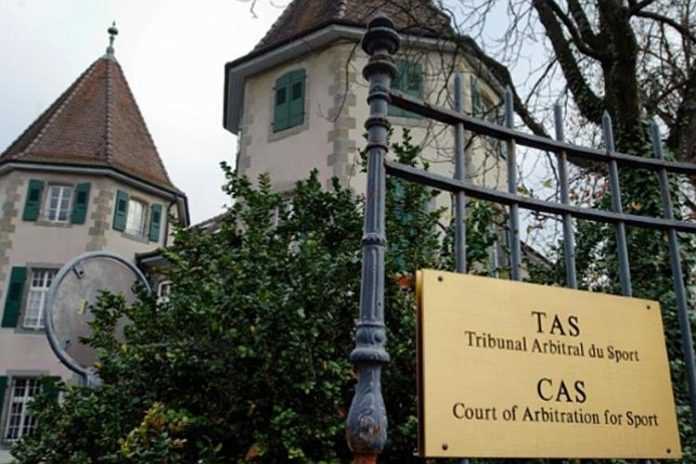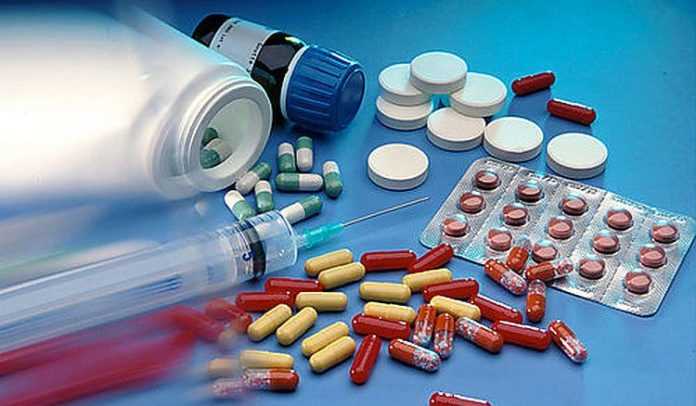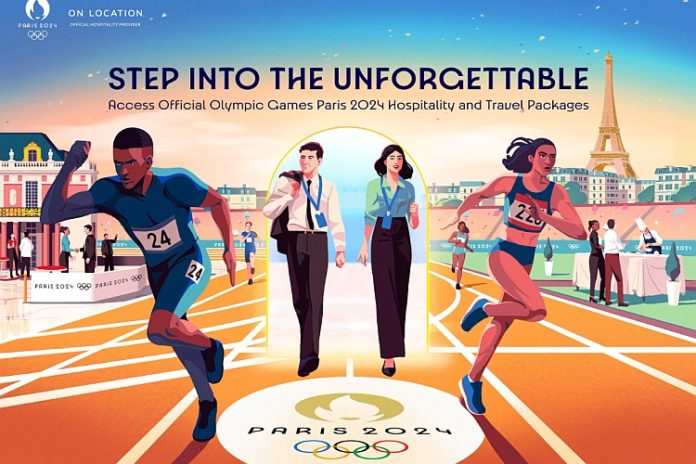★ The Sports Examiner: Chronicling the key competitive, economic and political forces shaping elite sport and the Olympic Movement.★
★ Thank you to our 17 donors, who have covered 38% of our technical expenses for the first half of 2023. Please consider a donation. Thank you in advance. ★
★ To get The Sports Examiner by e-mail: sign up here! ★
As the one-year anniversary of the revelation that Russian figure skating star Kamila Valieva had returned a positive doping test comes up on 8 February, the endless inquiries and appeals appear to finally be coming to a close.
The World Anti-Doping Agency’s announcement last Friday that the Russian Anti-Doping Agency’s Disciplinary Anti-Doping Committee had returned a decision holding Valieva – now 16 – to be at “no fault or negligence” for the positive test is an important step forward.
WADA had already filed, under its authority in the World Anti-Doping Code, to remove the cases from the Russian Anti-Doping Agency after months of waiting for a resolution to the case. Now it has one, so the next steps are clearer.
Based on the WADA statement, and statements made by others, what we know is:
● The RUSADA Disciplinary Anti-Doping Committee found that Valieva had, in fact, committed a doping violation. This is critically important.
● It found “no fault or negligence” on her part, which allowed the Disciplinary Committee – under the World Anti-Doping Code – to let her essentially skip any penalties; she was sanctioned with only a suspension of one day’s ineligibility for 25 December 2021, the day she took the test.
● The RUSADA Disciplinary Anti-Doping Committee is separate and independent of the Russian Anti-Doping Agency. This may sound strange given the names, but the Disciplinary Anti-Doping Committee is, essentially, an appeals panel for decisions made by RUSADA. And the main agency and the Disciplinary Anti-Doping Committee have not been on the same page for a long time on this case.
● The Russian Anti-Doping Agency itself says it may appeal the decision of the Disciplinary Anti-Doping Committee in the Valieva case! Said RUSADA chief Veronika Loginova:
“After reviewing the reasoning part of the decision of the disciplinary committee in this case, RUSADA will consider the possibility of appealing it. We expect to receive the full text of the decision in soon and without any delay.”
Strange? Not really. Consider the timeline a year ago:
● On 7 February 2022, during the Beijing 2022 Olympic Winter Games, Valieva’s positive test for trimetazidine – a prohibited substance – was confirmed by the Swedish laboratory doing the test, at a very low level of 2.1 ng/mL.
● On 8 February 2022, the Russian Anti-Doping Agency notified Valieva that she was provisionally suspended. Valieva immediately appealed.
● On 9 February 2022, the Disciplinary Anti-Doping Committee appeals board reversed the suspension and lifted the provisional suspension, allowing Valieva to compete in the women’s figure skating competition in Beijing.
So, RUSADA and its appeals division were not in agreement on the Valieva case a year ago and they aren’t now.
There’s all kinds of speculation about what will happen next and how Valieva’s status as a “Protected Person” – a minor – under the World Anti-Doping Code will help her. Based on what we know now, the case appears to be rather straightforward, but will surely be complicated by the full opinion of the Russian Disciplinary Anti-Doping Committee.
Let’s try to sort this out:
(1) Based on the WADA announcement last Friday, even the Russian Disciplinary Committee agrees that there was a doping violation by Valieva as shown by her 25 December 2021 test that showed trimetazidine in a low concentration of 2.1 ng/mL. This would suggest that Valieva’s B-sample also tested positive for the drug.
She tested negative on 30 October 2021, 13 January 2022 and 7 February 2022.
(2) The Court of Arbitration for Sport’s 41-page opinion in Beijing, issued on 17 February 2022, concerned only Valieva’s provisional suspension and her ability to compete in Beijing, and not whether a suspension after a full investigation should be imposed. However, that CAS decision provides a roadmap for what happens now, a year later.
(3) For athletes who are not “protected” – that is, adults aged 18 or older – the World Anti-Doping Code imposes suspensions for use of banned substances such as trimetazidine, usually of four years. Showings that a doping positive was caused by the ingestion of contaminated food or drink has sometimes caused suspensions to be lifted, but the contamination process must be specified in detail: what was ingested, where and how and with proof. For example, American sprinter and long jumper Jarrion Lawson successfully ended a suspension in 2020 with proof of contaminated beef he ingested from a specific restaurant.
(4) However, for a “Protected Person” such as Valieva – due to her age – the standard of proof for contamination is lower. In the World Anti-Doping Code, section 10.6.1.3:
“Where the anti-doping rule violation not involving a Substance of Abuse is committed by a Protected Person or Recreational Athlete, and the Protected Person or Recreational Athlete can establish No Significant Fault or Negligence, then the period of Ineligibility shall be, at a minimum, a reprimand and no period of Ineligibility, and at a maximum, two (2) years Ineligibility, depending on the Protected Person on the Protected Person or Recreational Athlete’s degree of Fault.”
(5) So now the question turns to the level of proof for Valieva to “establish” that she had “no significant fault or negligence,” permitting just a day’s sanction instead of a suspension of a few months.
WADA is hardly convinced that Valieva somehow drank – once – from the same glass that her grandfather (who apparently takes trimetazidine for a heart condition) used, or touched the glass in a way that would innocently introduce the drug into her body. WADA contended during the Beijing hearing:
“The position of the two [Russian] scientific experts was, in essence, that the concentration in the Athlete’s sample was compatible with contamination. The experts conceded, however, that the [positive doping finding] was also compatible with the end of the excretion period after a full dose of Trimetazidine. …
“The Athlete failed to provide evidence that her explanation is ‘most likely’: a) First, there is no independent and/or documentary evidence that the Athlete’s grandfather used Trimetazidine. There is, without limitation, no proof of purchase, no underlying medical records, and no prescription; b) Second, there is no scientific evidence as to whether the specifics of the AAF (in particular the concentration of Trimetazidine) are compatible with the athlete’s explanation of the accidental exposure.”
(6) What did the RUSADA investigation show and how did the Disciplinary Committee consider the evidence on appeal? This is why the opinion of the Disciplinary Committee is needed, in that it handed down a penalty at the absolute low end of the scale – a one-day sanction – while a suspension of up to two years is also possible for “Protected Persons.”
(7) WADA may actually be in a better position now than it was in November, when it removed the case from RUSADA to the Court of Arbitration for Sport, under section 13.3 of the World Anti-Doping Code. In that circumstance, “WADA may elect to appeal directly to CAS as if the Anti-Doping Organization had rendered a decision finding no anti-doping rule violation.”
It appears that now, even the new Russia Disciplinary Committee decision found that there was a doping violation by Valieva. If so, the burden is now on her to “establish” her lack of fault and not on WADA to prove that there was a violation and that she was at fault.
So, with WADA appeal coming, a Court of Arbitration for Sport panel – yet to be assigned – will have to weigh the level of fault that Valieva had in ingesting enough trimetazidine to create the doping positive.
With a normal suspension for a “Protected Person” of up to two years (24 months), if the CAS panel found her just 6.2% responsible, she could be assigned a ban of 45 days (6.2% of 730 days is 45) from the date of the positive test – 25 December 2021 – that would include 7 February 2022, when she finished competing in the Team Event in Beijing.
A more likely – and less pointed – ban would be three months, which would make Valieva ineligible for both the Team Event and the women’s Singles, disqualifying the winning Russian team and nullifying her fourth-place finish in the women’s competition.
All of this is really about Valieva’s eligibility to skate in the Team Event and whether Russia should be awarded the gold medal, or be disqualified. There is another inquiry into any mischief by the entourage around Valieva, but this is separate.
The Russian Disciplinary Anti-Doping Committee found a way to give Valieva a free pass for her doping violation prior to the Beijing 2022 Olympic Winter Games, in February of 2022 and now in January of 2023. It’s far from sure that she will get the same lenient treatment in front of a non-Russian panel at the Court of Arbitration for Sport.
In the meantime, however, everyone – including the American, Japanese and Canadian skaters that went 2–3-4 in the Team Event – have to continue to wait.
Rich Perelman
Editor
You can receive our exclusive TSX Report by e-mail by clicking here. You can also refer a friend by clicking here, and can donate here to keep this site going.
For our updated, 929-event International Sports Calendar for 2023 and beyond, by date and by sport, click here!




























